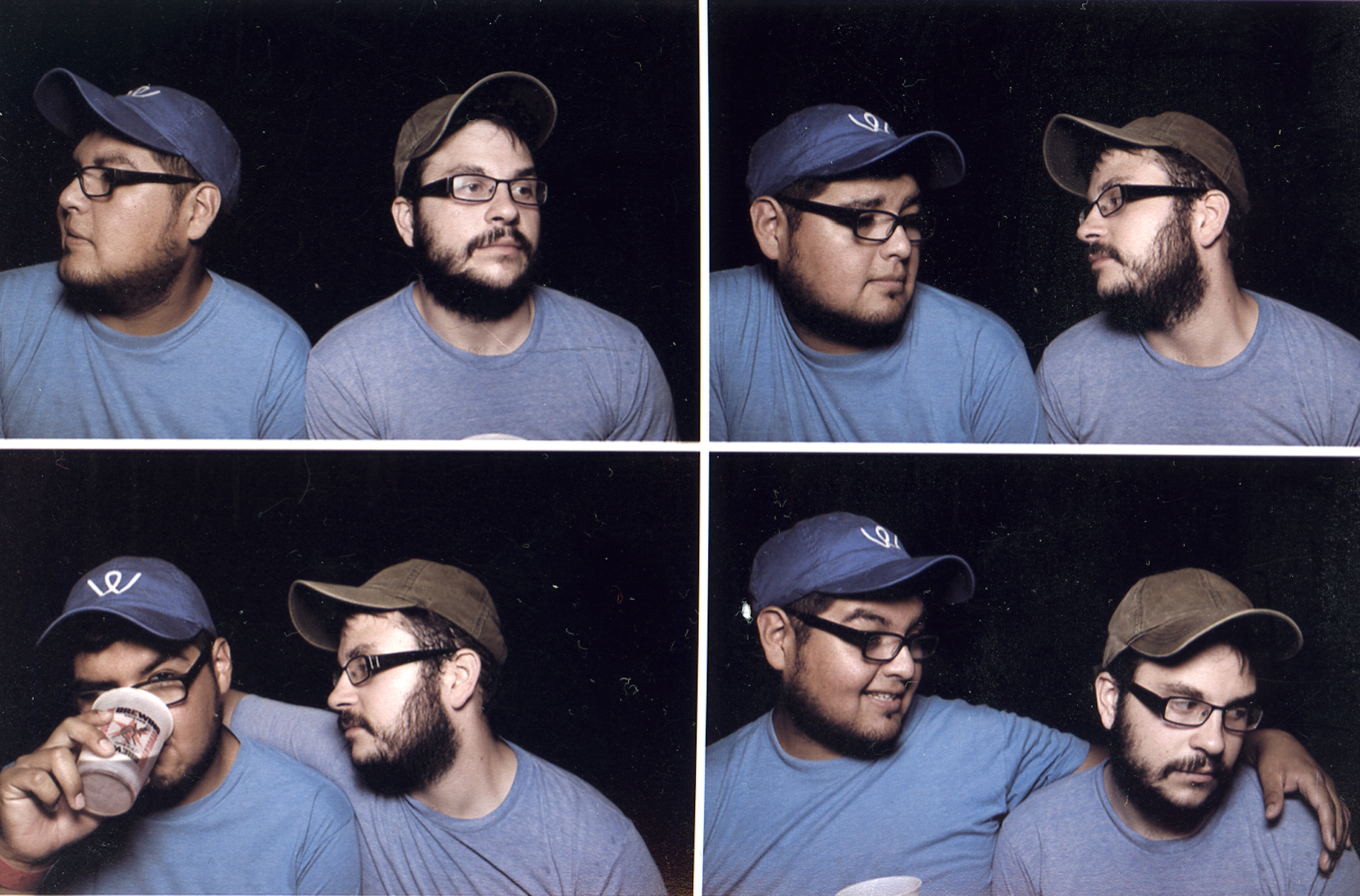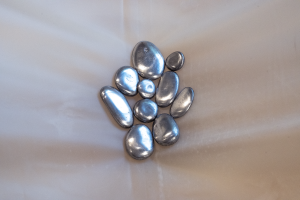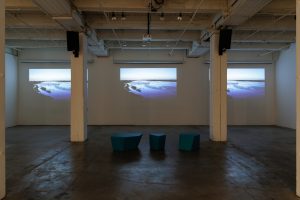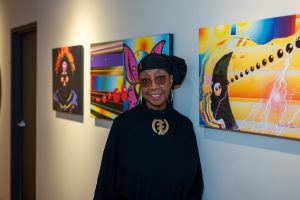J. Gibran Villalobos (JGV) and Wil A. Ruggiero (WAR) are each one half of the curatorial team that works under the moniker JGV/WAR. Together and individually they have worked on research projects and curated exhibitions all over the city, developed along the lines between people’s diverging ideas and disagreements, or with emphasis on civic engagement and Latin American Art. Currently, they are curators-in-residence with the Department of Cultural Affairs and Special Events (DCASE) in Chicago. This is their story.
On where it all started:
JGV: [We met while] teaching in the same art history course during grad school and being in the same program. I was supposed to provide some answers through email to questions relating to the course, but I had forgotten to reply to WAR. When we met, a colleague from the department had liked [the idea of us being] program counterparts.
WAR: Technically, [we] first met at the Hyde Park Art Center at an event for incoming students. Someone told me I reminded them of a second year student. I asked them who and they pointed to JGV. We taught an intro survey to art history class.
On one another’s process and practice:
JGV: He definitely has a more thorough thinking process. It’s one that gives consideration to conditions that are often overlooked in the process of rushed administration. WAR also has an uncanny memory that reaches into essays and lectures from graduate school. This is what makes up the mind of the historian–the ability to recall and configure how those pieces are still relevant today. Also, WAR has a much smoother way of writing–there is a flow and a rhythm to the delicacy of his words.
WAR: JGV’s process is very streamlined with a byproduct in mind. A lot of the time this also involves delegating certain things to artists, whether it be administrative or more rigorous conceptual answers. His process is based on mapping out a process and having artists understand the administrative aspect of curatorial work as well. This is for them to also understand how their conceptual work should transform into a pragmatic possibility.
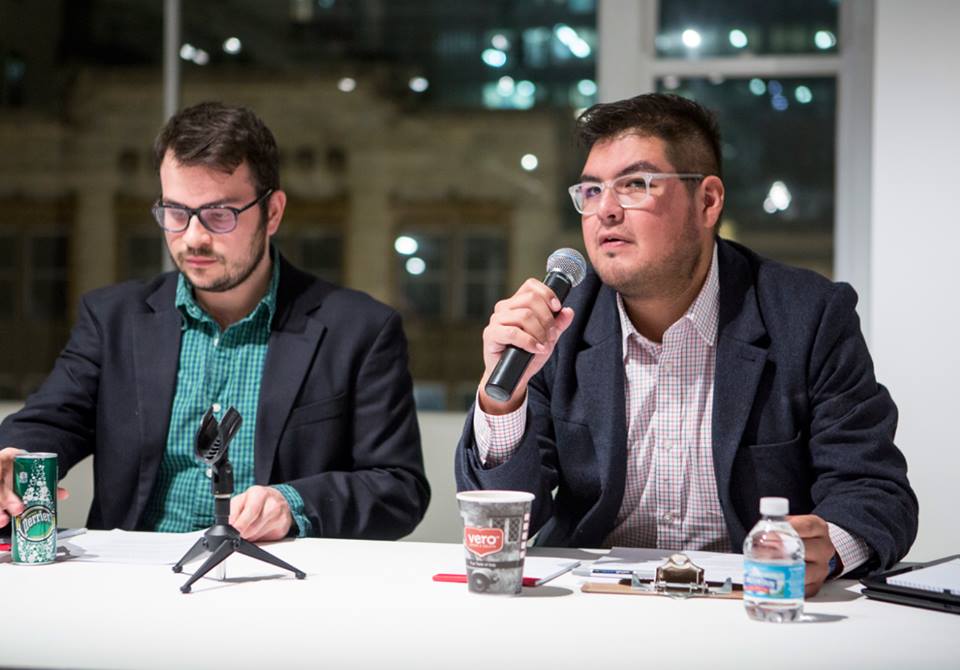
On sharing space:
JGV: [We share] a desk. Most of our work though, is a shared online document. We aggregate, sometimes from opposite ends of a room or the city, but still manage to argue in real-time. The arguments can get pretty frustrating, especially when timelines are in place. In a way, even when we’ve served in public panels, our disagreements are evident. We allow for these open moments to invite others to also be in dis/agreement with either of us.
WAR: Our work space can be anything from an artist’s studio where we are deliberating about an artist’s work, [to] a digital space like a shared document, the empty space of a gallery pre-installation, or a basic table where two sides [represent] an idea and [we] try to create a third space.
On collaborating with one another:
JGV: When the project is a signature JGV/WAR project, we collaborate. Collaboration isn’t too novel for us because our whole practice is about collaborating and negotiating, neither of us has ownership of the projects we do, independent of the other. It makes our work either a very slow or very quick process.
WAR: We collaborate regularly but sometimes JGV will steer a project in a different direction where I don’t really fit. I also have my own research which is independent of JGV/WAR.
On how their process and practice has been influenced by one another:
JGV: WAR has taught me a lot along the way about the stakes of ethics and the benefits of slowing down [in order to] really giving things thorough consideration. At times, I’m so excited (or dreading) to get work done, that I rush to a final product. WAR jams in those broad strokes of thinking. In the end, I recognize that the individual attention given to projects really does create meaningful and profound gestures. We’ve both worked on projects in Cuba, a place where, due to technological challenges, we have to work slowly. We’re both fans of Cuba for that reason: slow work is deliberate, intentional, and deeply-felt.
WAR: I am someone who at times throws practical thinking or a pragmatic decision out the window and likes to just reside in the theoretical. JGV’s mode of administering and materially shaping a project has helped me understand how to mobilize certain forces without always compromising the conceptual angle. I have definitely gained a different insight into working with multiple parties.
This interview is part of a series. You can read more Art + Love interviews here.
All photos courtesy of the curators. And you can follow JGV/WAR’s work on their website, jgv-war.tumblr.com.
 Tempestt Hazel is a curator, writer, and founding editor of Sixty Inches From Center. Her writing has been published by Hyde Park Art Center and the Broad Museum (Lansing), in Support Networks: Chicago Social Practice History Series, Contact Sheet: Light Work Annual, Unfurling: Explorations In Art, Activism and Archiving, on Artslant, as well as various monographs of artists, including an upcoming book of work by Cecil McDonald, Jr. published by Candor Arts. For more, visit tempestthazel.com. (Photo by James T. Green.)
Tempestt Hazel is a curator, writer, and founding editor of Sixty Inches From Center. Her writing has been published by Hyde Park Art Center and the Broad Museum (Lansing), in Support Networks: Chicago Social Practice History Series, Contact Sheet: Light Work Annual, Unfurling: Explorations In Art, Activism and Archiving, on Artslant, as well as various monographs of artists, including an upcoming book of work by Cecil McDonald, Jr. published by Candor Arts. For more, visit tempestthazel.com. (Photo by James T. Green.)
